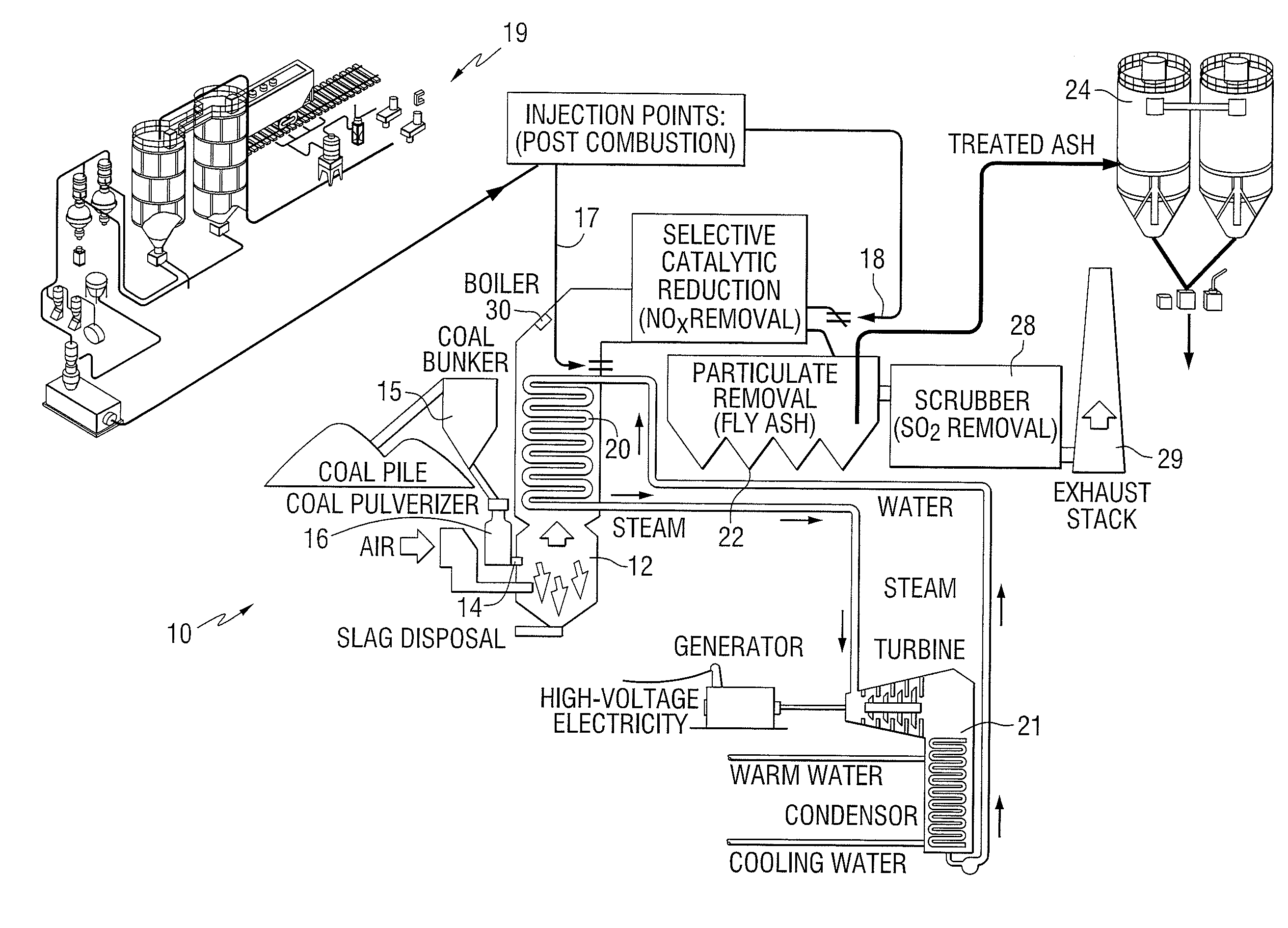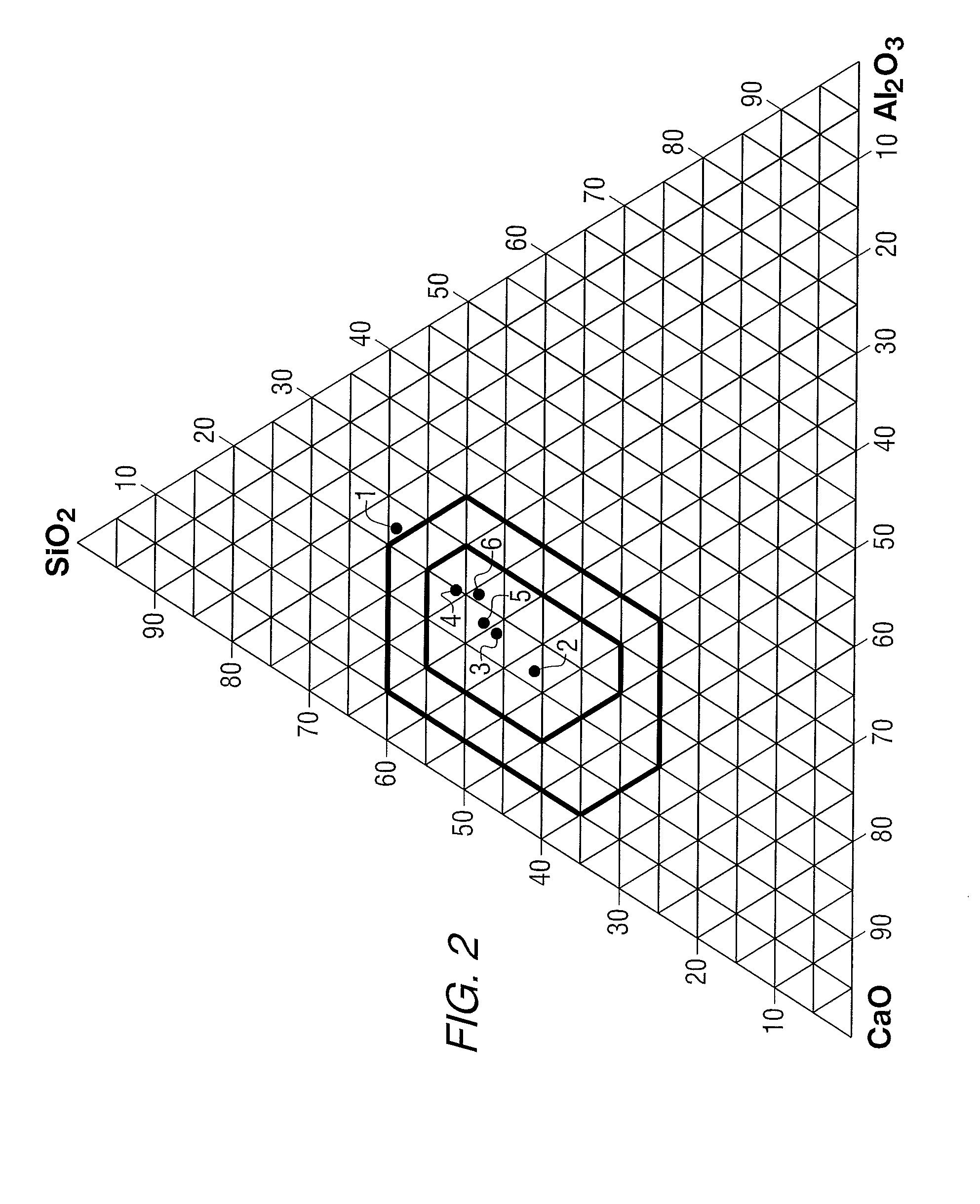Production of cement additives from combustion products of hydrocarbon fuels and strength enhancing metal oxides
a technology of hydrocarbon fuel and additives, which is applied in the direction of sustainable waste treatment, solid waste management, lighting and heating apparatus, etc., can solve problems such as negative impact on the environment, and achieve the effect of reducing so2 emission levels and increasing compressive strength of cements
- Summary
- Abstract
- Description
- Claims
- Application Information
AI Technical Summary
Benefits of technology
Problems solved by technology
Method used
Image
Examples
example 1
[0044]Bituminous coal was mixed with metal oxide strength enhancing materials of the types and amounts listed in Table 3 below. Each mixture was then introduced into the combustion zone of a tangential firing burner. The average particle size of the resultant combustion product for each sample is listed in Table 3. In each case, the average particle size of the combustion product is less than 10 microns and is significantly less than the particle sizes of the starting coal and additive materials. The relative amounts of CaO, SiO2 and Al2O3 contained in each sample are also listed in Table 3 as measured in accordance with the ASTM C114 standard. The relative amounts of CaO, SiO2 and Al2O3 are plotted on the ternary diagram of FIG. 2, with each sample number labeled.
TABLE 3Combustion Products - Bituminous CoalCombustionRelativeBituminousProductCaO / SiO2 / Al2O3CoalAdditiveAve. Particle SizeContents (wt %)Sample No.(wt %)(wt %)(microns)CaOSiO2Al2O3192.08limestone6.619.259.021.8275.118lime...
example 2
[0045]The combustion product samples of Example 1 were mixed with Portland cement in ratio of 30 weight percent combustion product and 70 weight percent Portland cement. Each blended mixture was combined with sand and water and tested for compressive strength development in accordance with the standard ASTM C109 test procedure at days 1, 7, 28 and 56. The measured compressive strengths are listed in Table 4 below and shown in FIG. 5.
TABLE 4Compressive Strengths - Bituminous Coal -30 percent Combustion ProductCompressive Strengths (psi)Sample No.1 day7 days28 days56 days119112897——228295497——31976638482309608415335493759481935180254398353959461597505989509786
example 3
[0046]Example 2 was repeated except the combustion product was added to the Portland cement in an amount of 60 percent additive and 40 percent Portland cement. Compressive strengths of each sample are listed below in Table 5, and shown in FIG. 6.
TABLE 5Compressive Strengths - Bituminous Coal -60 percent Combustion ProductCompressive Strengths (psi)Sample No.1 day7 days28 days56 days162424755014—286330595773—39882842736185674717307467557058
PUM
| Property | Measurement | Unit |
|---|---|---|
| particle size | aaaaa | aaaaa |
| particle size | aaaaa | aaaaa |
| weight percent | aaaaa | aaaaa |
Abstract
Description
Claims
Application Information
 Login to View More
Login to View More - R&D
- Intellectual Property
- Life Sciences
- Materials
- Tech Scout
- Unparalleled Data Quality
- Higher Quality Content
- 60% Fewer Hallucinations
Browse by: Latest US Patents, China's latest patents, Technical Efficacy Thesaurus, Application Domain, Technology Topic, Popular Technical Reports.
© 2025 PatSnap. All rights reserved.Legal|Privacy policy|Modern Slavery Act Transparency Statement|Sitemap|About US| Contact US: help@patsnap.com



